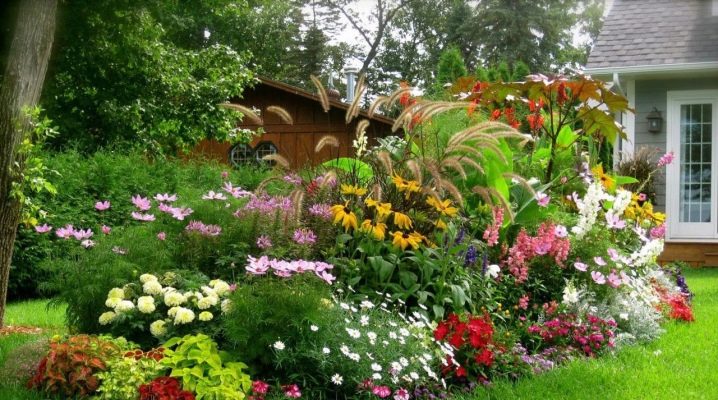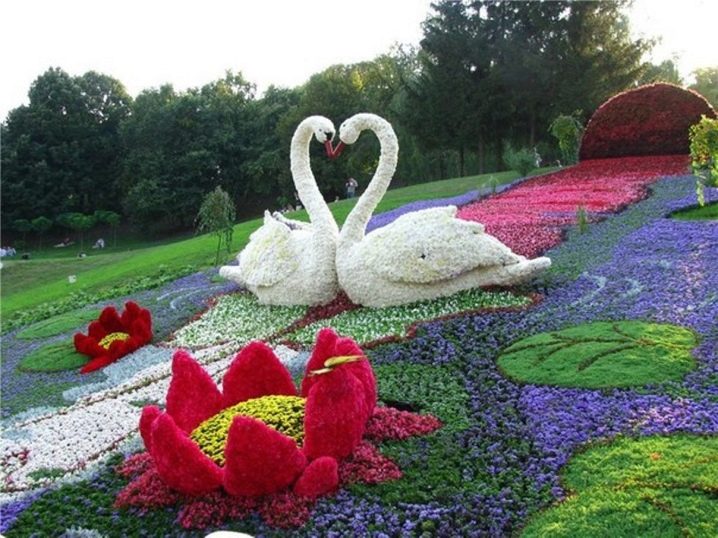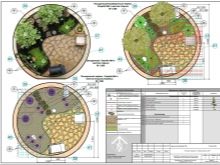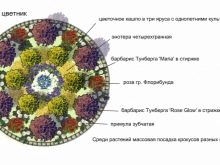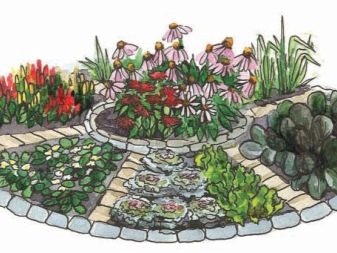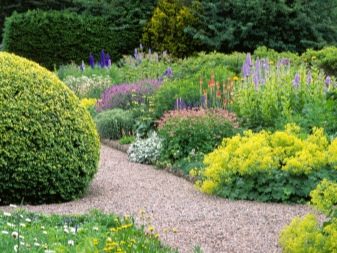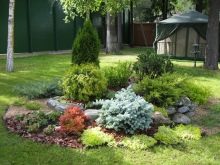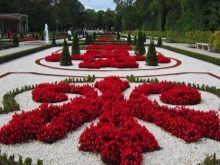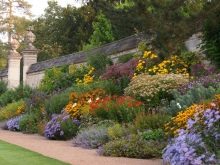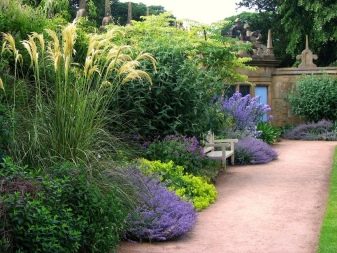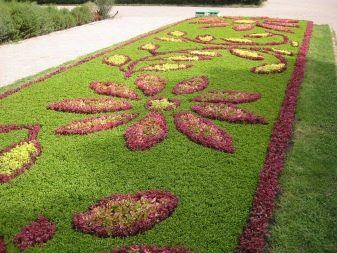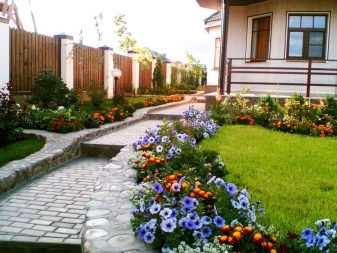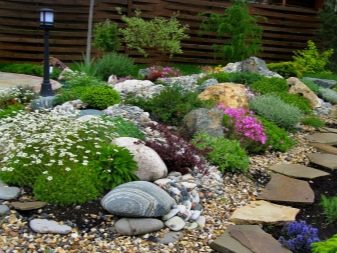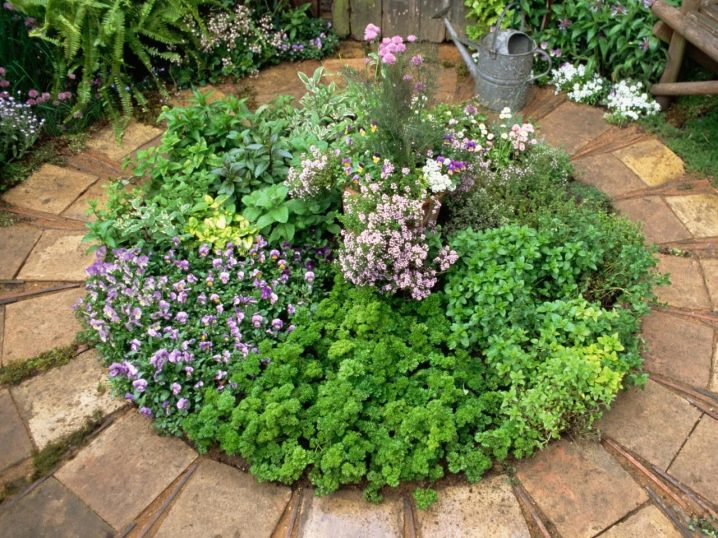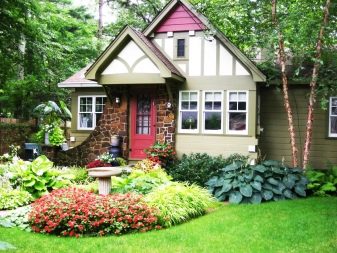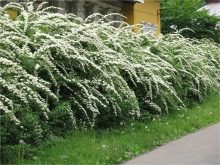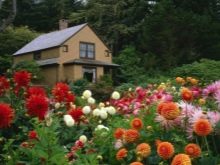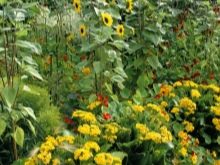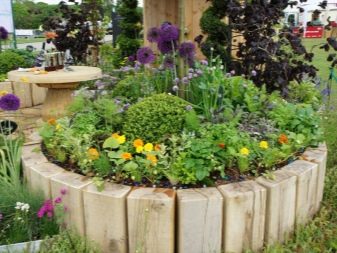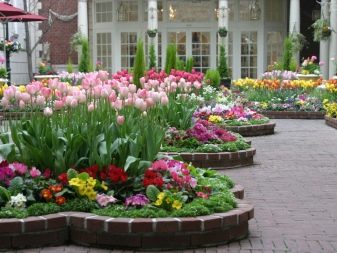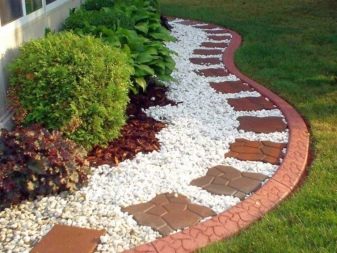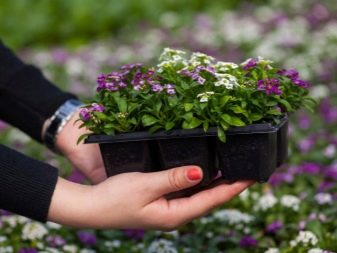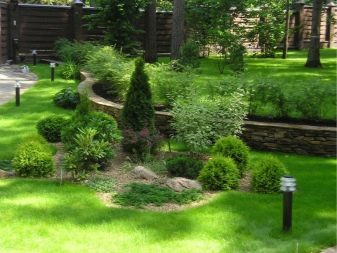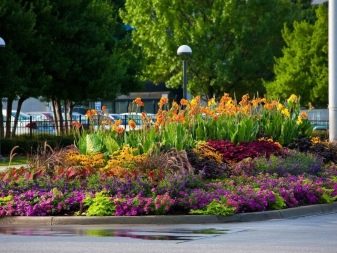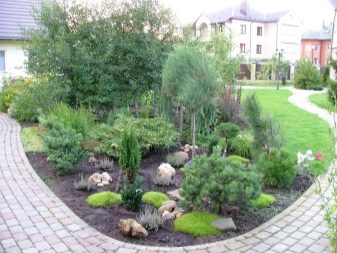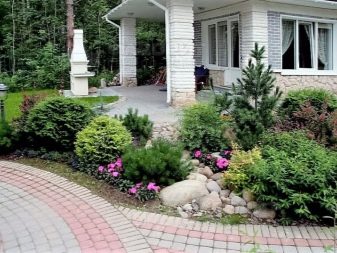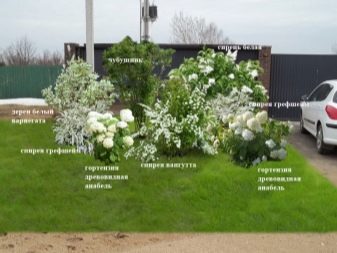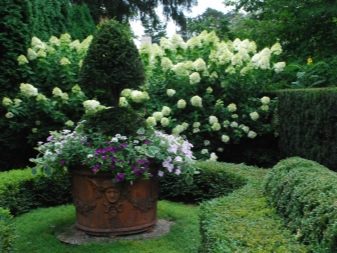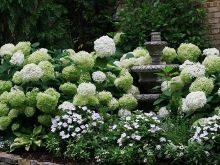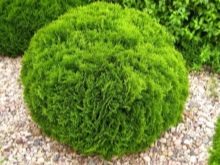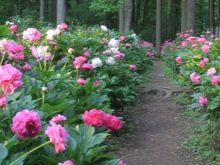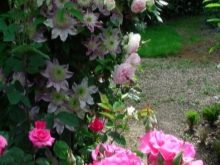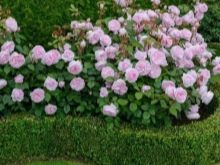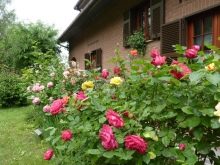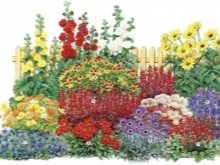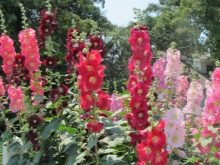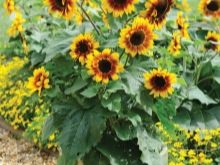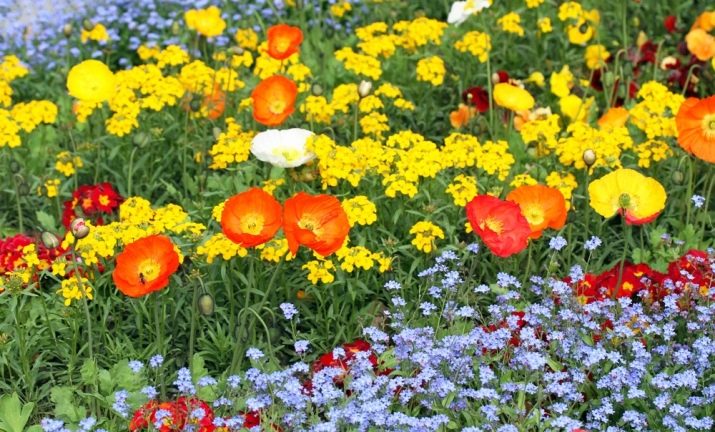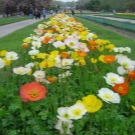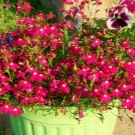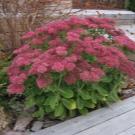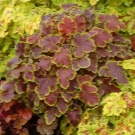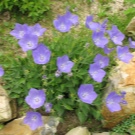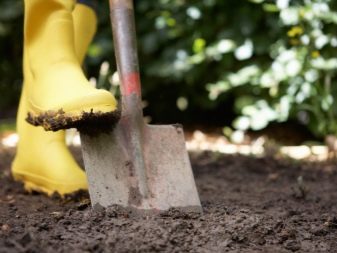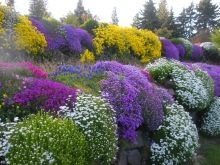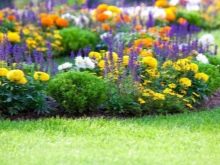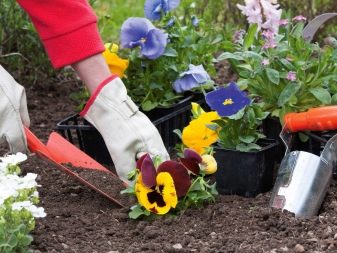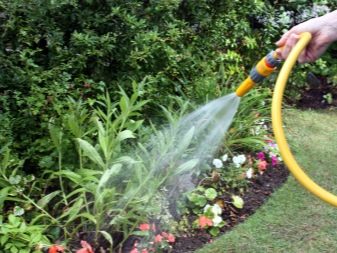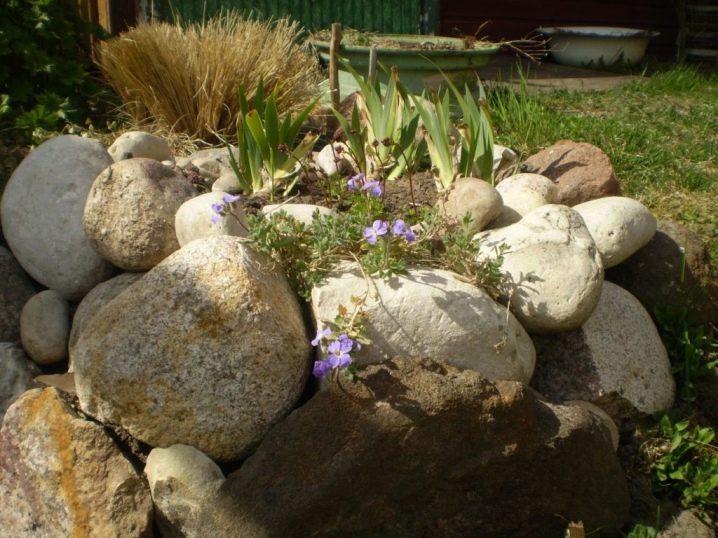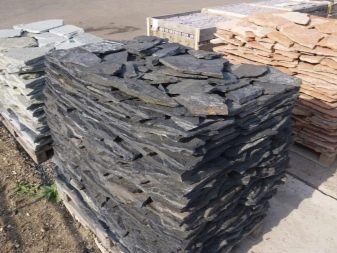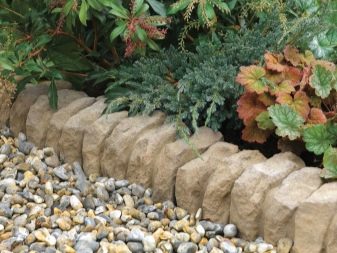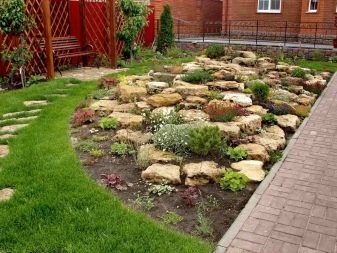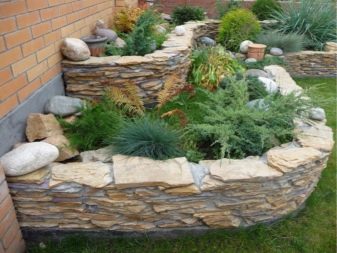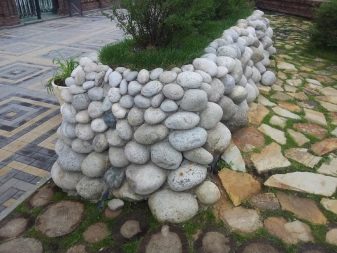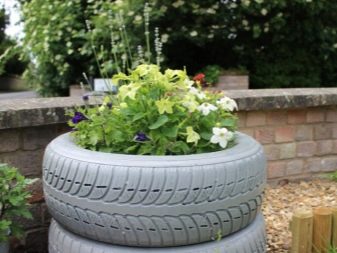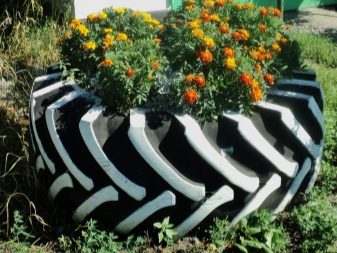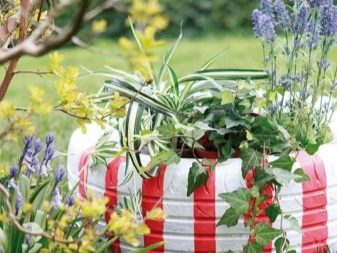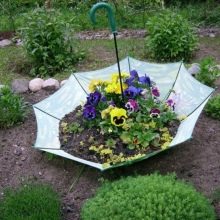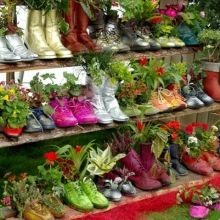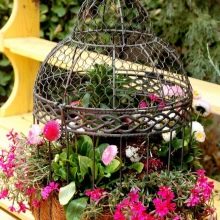Features of landscape design flower beds
The beauty of any country house, cottage or cottage will be able to emphasize a thoughtful, stylish landscape design of flowers, bushes and various plants. Today, there are many options for how to make the area in front of the house memorable and unique. The flowerbeds will also highlight the style that you chose when erecting your structure. They will enliven the overall picture, as well as make the territory of your site bright and harmonious. And most importantly - they will allow you to realize all your wildest dreams of home improvement.
Special features
Nothing pleases the eye like a riot of colors and colors, but simply flower beds in front of the house or in an unusual garden behind the courtyard.
To do the landscaping of the site, you need to develop a plan, thanks to which you will not make mistakes, and you will calculate everything correctly:
- make a drawing of future flowerbeds in order to imagine what it will look like, how much space they will take;
- if your site is uneven, it must be corrected: dig up the ground, remove stones from it and prepare the soil;
- planting flowers, clearly determine the boundaries, because plants can grow, and your "border" lines will lose clarity;
- if you plan to plant flowerbeds behind the yard, make a path towards them;
- plant in flowerbeds no more than 5-6 colors;
- Do not be afraid to experiment with color shades, but remember that in a flower bed all flowers should bloom at the same time, therefore, in order to achieve a stunning effect, pick up seedlings on this basis. Plus - the height of the plants: they should also look the same.
Be sure to think over the question of what your flowerbeds will be, because designers recommend using their various types - for the front garden, for the center of the courtyard, even if you want to create an impression of freedom, like in a real rural meadow.
Choose a type of flower bed for your suburban settlement:
- Flowerbeds are strict forms - regular, planted strictly symmetrically (or along the tracks) and landscape, where the flowers can grow in a "free" form.In such options are usually planted perennials: shrubs, ornamental and even coniferous trees.
- Stretched along the paths flowerbed-mixborder. It is usually planted in ascending plants from small to higher. Such models look spectacular in large areas, creating the illusion of an alley.
- Square or rectangular flower beds, which are located in the center of the site, are called parterre. In such beds planted flowers in contrasting shades.
- Live curbs. They land if you have paths along the site at your dacha. In this case, plant different flowers. Such a colorful "carpet" will give an amazing variety to your garden.
- Alpine slide. This is one of the most winning flowerbed options: the flowers surrounding a small pond or fountain will create a very harmonious and cozy picture.
The peculiarity of each bed is the possibility of its panoramic view. Many owners prefer circular shaped flower gardens, so that beautiful plants can be enjoyed from different viewpoints.
Zoning and layout
A good solution to your landscape design will be the correct zoning of flower beds.A joyful mood will create flower beds, broken immediately in front of your house (at the entrance). Multi-colored petunias, lilies, decorative roses, clematis - for every 100 sq. Cm you can plant 8-10 pieces. A flower bed in the middle of the plot, which is under the influence of direct sunlight, can become a "trick" of your yard. The same petunias or hibiscus will be appropriate here.
Many designers who specialize in creating landscape design, offer ready-made projects on the proper planning of flower beds near a country house. As a rule, experts first of all suggest starting with a hedge - such a seating arrangement will allow you to visually divide the site into specific zones. To tastefully “fence off” from the neighbors, you can afford to live hedges, consisting of small fences of trees and shrubs. The recommended height of such a “fence” is up to 1.5 m. Small fences up to 40 cm will also create a perfectly limited area, clear and well-groomed, if you regularly cut them.
For this type of fencing, it is recommended to plant a Japanese quince, almond or various types of spirees. Would you like to have a flower fence? Plant dahlias or centers.Original look decorative sunflowers. True, their height sometimes reaches 2 meters, but bright and sunny flowers will give a summer and joyful mood to your site.
If your space is not limited by the meter, feel free to use the arch or screens recommended by experts. Such a landing will decorate your territory not only visually, but also protect your beauty from gusts of wind and background noise. Moreover, in the shadow of such a design it will be possible to plant flowers that do not like the scorching heat, and to set openwork benches or gazebos between them.
Not bad will look and raised flower beds. They ideally look on a site where small slopes are observed. Such flower beds can be lined with stone, original wooden bars or plastic decorative fences. Raised zones can be created artificially with the help of wooden flooring or imported land. Next to these beds will look harmoniously small pool.
According to the designers, it is possible to single out a special zone on your site with the help of various gravel paths. Blooming flower beds along a winding path,paved with colored tiles is an excellent option for a “positive” garden. The tracks on the diagonal clearly delineate the plots you need.
Plants
It is very important to know which flowers and plants can be used to decorate the design of your site. It is necessary to choose the right color and height of plants. Many people think that it is enough to stock up on colorful seed bags - and the flowers will grow on their own. In fact, planting flowers is a painstaking and hard work. Some plants need to be planted only seedlings, others bloom nothing at all, others do not like the sun and so on.
Choosing a place for planting flowers, make sure that the plants were comfortable. Well, of course, design decisions require careful study of the “behavior” of future roses, conifers and seemingly unpretentious shrubs.
If your flowerbed assumes flowering of low-growing flowers, then choose primroses, petunias, dwarf irises, striking with a variety of colors. In the depths of the flower beds, to create a “gradual” flowering, plant charming zinnias and delphiniums.Place cannes or languid roses in the center of your design decision. You can also try to plant there even lilac. The basis of your flower arrangement can be any ornamental trees or shrubs - juniper, thuja or dwarf spruce.
By the way, coniferous trees on the site is a separate topic. According to the recommendation of designers, if your author’s composition includes 3 types of coniferous trees, the color scheme should consist of two shades. An important moment is the crown, which can be pyramidal, oval or conical. And, of course, the height of the trees: the western thuja can reach 5 m in height, the juniper - 3 m, but the giant pines can reach 40 m. However, the growth of conifers can be adjusted: annually pinch the shoots.
Would you like to break a bed of short conifers? Choose western tui, mountain pine Hampi or Mini Pug. And most importantly, do not be afraid to experiment with conifers!
Excellent flower bed patterns
If you decide to realize all your dreams of landscaping the site and do your own garden, read for a start with various examples and expert advice.Start with unpretentious plants, so more options to enjoy the result of their labor. Designers offer ready-made color schemes with a romantic name. For example, a very fashionable trend - monochrome in the design of your flower garden.
- If you have decided to combine green and white colors, feel free to use the following plants: white peonies or primula with white flowers, as well as tree hydrangea. Trim the flowers with a silvery green.
- Would you like to grow pink flowers? Again, gentle peonies will come to your aid, as well as fragile and tender roses, chrysanthemums and clematis.
- The “coniferous” theme is useful to you if you create a flower bed where all plants have one form: thuja is spherical, hydrangea bushes or spireas are round.
Here is an example of a charming flower bed, consisting of perennial flowers of continuous flowering:
- For a blooming picture, pleasing the eye, the necessary sunny place. Select an area of 2.5 m by 3.5.
- One of the first to plant a stem is a rose from the Malvova family. It comes in a variety of colors, from pale pink to blood red (80 species). This miracle blooms until the first cold, starting in mid-summer.
- In the neighborhood, place a decorative or ten-petal sunflower. It is absolutely unpretentious, bright, tall and also blooms for a long time.
- From May to October, the Poppy will also bloom - it will stand in the second row after the previous high "colleagues". Poppy comes in different shades - white, pink and red.
- Yellow St. John's wort (choose odorless colors) and blood-red lobelia cardinal with contrasting colors will add chic to your flower bed.
- The small Matron bushes of the sedum, which live before the first snowfall, and the unusual coloring of the Miraclera geyher, can frame a small garden.
- Such bells and bells, and the tender lilac flowers of the catnip, and the pale blue katanange “Blue Cupid” blooming all summer long can diversify such an inflorescence.
Expert advice
In order for your flower bed to be the subject of admiration, be sure to listen to the advice of experts:
- Almost all flowers love the sun. That is why look for a convenient place for your plants.
- If the plot is overgrown with grass, even lawn, it must be removed. Do not run the ground.
- Remove every single weed that makes it difficult for your pet to bloom.
- If the soil of the future flower bed is clay, add sand to it.
- The ideal fertilizer for the soil is compost, which will improve the fertility of the soil.
- Break a mixed-flowerbed, because after the annual flowers ottsvetut, you have to start all over again.
- Perennial flowers guarantee you a lovely view of the flowerbed for years. Want a variety - you can add other flowers to it.
- Flowers require watering, some more, others less. Undemanding are mallow, geranium and poppies.
- Irises, sage, echinacea and cloves will have to be periodically replanted.
- Careful care requires roses, lilies, hyacinths and begonias.
- If you are planting seedlings in the ground, be sure to water it. Let the soil soak.
- Pulling seedlings out of the pots, do not damage the root system.
- Dig a separate hole for each flower.
Beautiful examples
The design of the flower bed is of no small importance.
- The original decision will be the decoration of the flower bed stone. Such "stone" beds can be the subject of admiration, if they invest not only skill, but also fantasy. For such a case can be used limestone of different shades.True, it will not last long. On such a stone moss and seaweed grows beautifully.
- Tuff and slate, when properly designed, will make your flower bed unrivaled. For example, slate can have an interesting coloring - from violet to green.
- Granite in the design of a flower bed is rarely used, as it oxidizes the soil. The ideal option is basalt. The flowerbeds made by him and even lawns have a well-groomed appearance.
- Making flower beds with pebbles is an economical and yet original version.
- In the design of the flower bed, you can use the materials at hand - wooden and metal fences, even old tires or trim metal.
- Using fantasy, even old shoes can be “attached” to decorate a flower garden. It is possible to use boots not only as a cache-pot, but also as an independent decorative ornament.
- Cage for birds can also become an ornament of the dacha, turning into an original flower bed.
How to make a bed of continuous flowering, see the following video.
